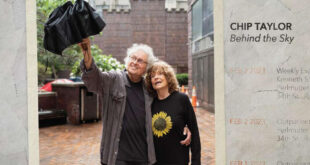Rafael Medoff notes that Hollywood once lined up to denounce Hitler and save the Jews, now Hollywood lines up to save Saddam:
- A number of Hollywood celebrities are stirring controversy with their vigorous opposition to American military action against Saddam Hussein. Among others, Woody Harrelson has declared that such U.S. action would be “racist and imperialist,” while Harry Belafonte has characterized Secretary of State Colin L. Powell as a cowardly slave kowtowing to his master.
For some, Hollywood’s interest in Iraq is reminiscent of celebrities’ earlier involvement in causes such as the Vietnam War, the environment and nuclear disarmament. What is not widely known is that the first cause that a significant number of Hollywood figures embraced was the rescue of Jews from the Holocaust.
The man who introduced Hollywood to the rescue issue was the screenwriter and journalist Ben Hecht, whose credits included such films as “Scarface” and “Wuthering Heights.”
In 1941, Hecht joined up with Peter Bergson, a militant Zionist emissary from Palestine, who hoped to convince the Allies to establish a Jewish military force to take part in the war against the Nazis. Although the magnitude of the Nazis’ slaughter of the Jews was not yet known, enough information about Nazi atrocities had filtered out to rouse the support of many Americans for the notion of arming Jews to fight Hitler.
When Hecht brought Bergson to Hollywood, he found considerable sympathy for the project. Movie producer David O. Selznick signed the telegram announcing the Jewish Army committee’s local fund-raising meeting, and actor Burgess Meredith was one of the featured speakers. Hollywood columnist Hedda Hopper made the first pledge. Among Bergson’s other early supporters were such well-known Hollywood names as Melvyn Douglas, Eddie Cantor and Jimmy Durante.
In late 1942, after Allied leaders publicly confirmed that the Nazis were engaged in genocide, Bergson shifted gears. He set aside the Jewish Army committee and established the Emergency Committee to Save the Jewish People of Europe. Hecht followed, as did an ever-growing list of Hollywood luminaries.
Numerous celebrities volunteered their services for “We Will Never Die,” a pageant written by Hecht to publicize the Holocaust; it was produced by Billy Rose and directed by Moss Hart, featured a musical score by composer Kurt Weill and starred actors Paul Muni, Edward G. Robinson and Stella Adler. Its two opening performances at Madison Square Garden drew audiences of more than 40,000. When it was staged in Washington, D.C., attendees included First Lady Eleanor Roosevelt and several hundred members of Congress, as well as members of the Cabinet, Supreme Court justices and prominent diplomats.
….Sixty years ago, some of the biggest names in Hollywood urged their nation to intervene when an evil dictator invaded neighboring countries and sought to slaughter millions of Jews. Today, another evil dictator menaces his neighbors and seeks the destruction of the Jews — yet now many Hollywood celebrities are urging the U.S. to refrain from intervening.
How times have changed.
 Blogcritics The critical lens on today's culture & entertainment
Blogcritics The critical lens on today's culture & entertainment



